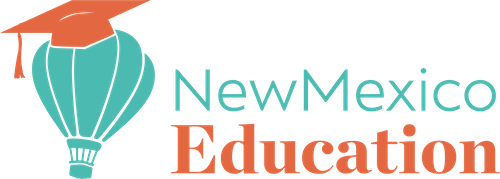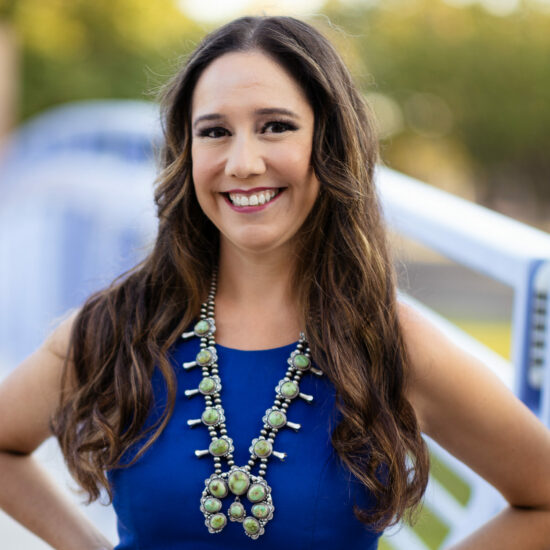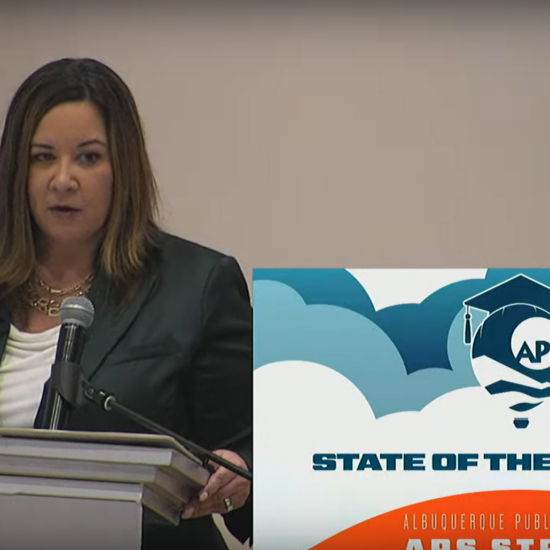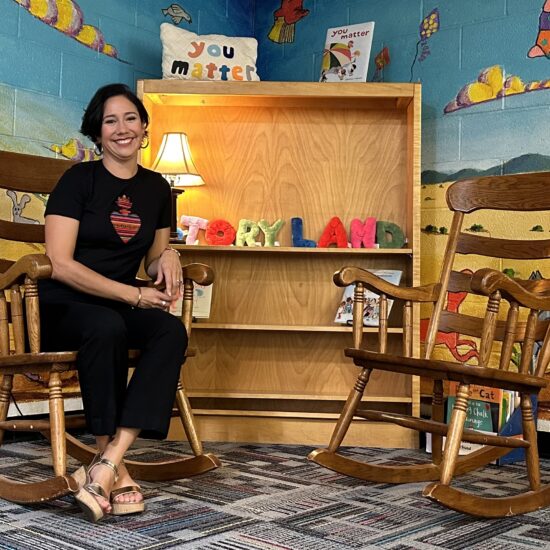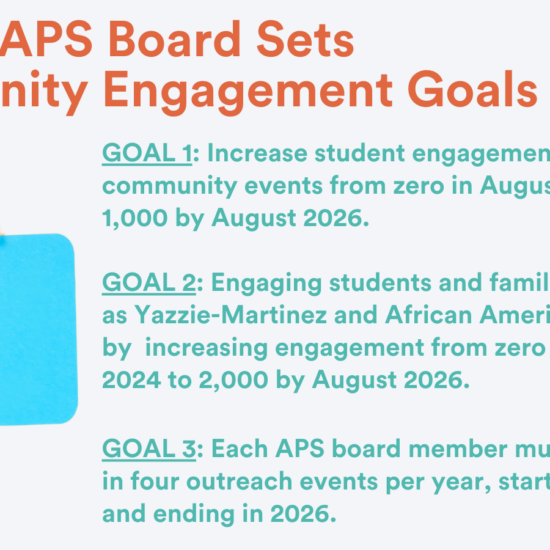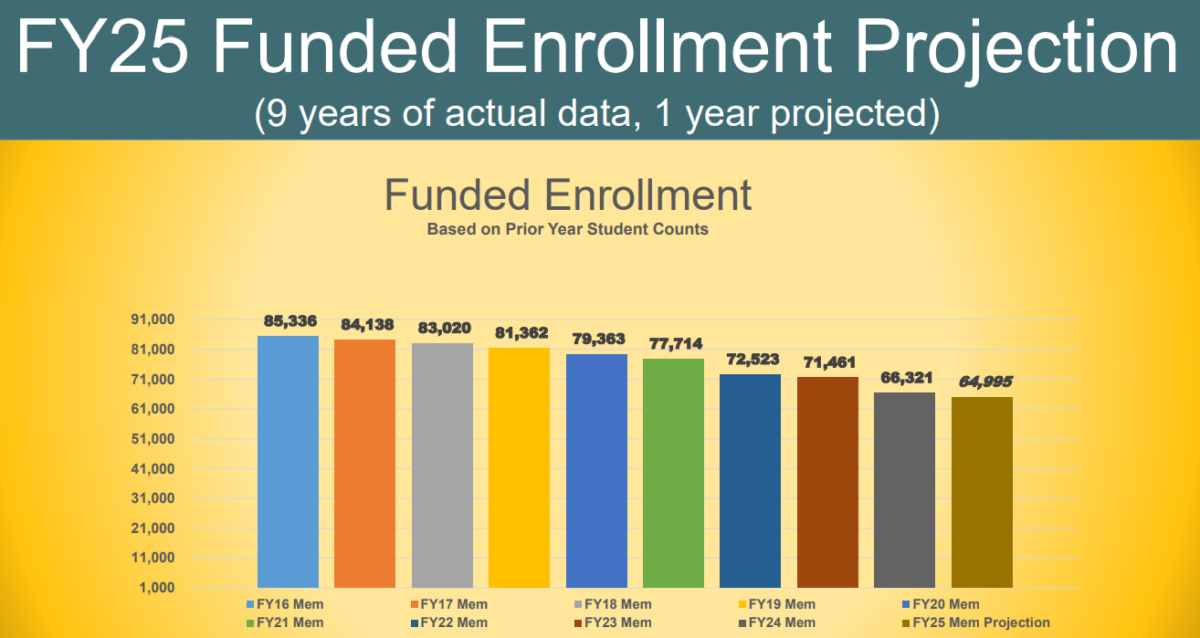
Albuquerque Public Schools (APS) is grappling with budgetary constraints ahead of the new budget year, Fiscal Year 2025 (FY25), due to a steady decline in student enrollment, which directly impacts district funding. The district will continue working and take final action on the FY25 budget at the end of May.
Last May, the board of education approved a budget of almost $2.2 billion for the school district, a budget larger than the City of Albuquerque’s. Chief Financial Officer Renette Apodaca told the board their next budget will be “slightly less” than the current budget.
A strain on the budget, enrollment figures have shown a persistent decrease from 85,336 students in FY16 to 66,321 in FY24, with an estimated drop to 64,995 students enrolled in FY25. Apodaca said the decline is part of a nationwide trend but is causing APS to tighten its wallet as it tries to maintain quality education and services amid shrinking budgets.
Budgeting Through Uncertainty
A shrinking student population decreases the amount of funds received through the State Equalization Guarantee (SEG). The district is witnessing a decrease in students that has led to a projected $2.5 million reduction in SEG funds for FY24, posing challenges as they plan for the subsequent fiscal year with fewer financial resources.
Additionally, a key funding source that became available to the district as a result of the COVID-19 pandemic is going away. Known as the Elementary and Secondary School Emergency Relief Fund (ESSER), these funds have been used by APS to pay for student support systems, such as mental health and tutoring services.
In light of these challenges, APS is taking strategic steps to manage the financial shortfall.
Over the last three months, APS has held a series of community engagement events, with two of those specific to gathering community input about the upcoming budget. In these, the community was presented with the issues affecting the budget, and asked what their priorities for students were.
With community input and legally required priorities to fund, the district has outlined a series of potential solutions and adjustments to ensure the sustainability of critical programs and services. “We are currently identifying essential areas that require funding and exploring alternative funding sources for key initiatives,” Apodaca said during the budget presentation.
APS is actively exploring alternative funding sources to sustain essential programs whose initial funding was under ESSER.
- Panorama Software: This tool used for social-emotional learning assessments and support was initially funded by ESSER funds. With these funds drying up, APS is looking for other grants or possibly reallocating existing resources to continue its implementation.
- Paper Tutoring: An online tutoring service that was also funded by ESSER is another service APS aims to maintain. The service is especially important as it provides after-hours homework and study help for students, aligning with the district’s goal to enhance educational outcomes.
The district emphasized the need to maintain the continuity of programs essential for student support, which may now face budget cuts.
- Fine Arts Expansion: The expansion of the Fine Arts program is at risk as the increased funding factor that supported this initiative in the past did not continue into the current fiscal year. APS is considering reallocating funds or finding new funding sources to complete the final phase of this expansion.
- 21st Century Community Learning Centers (21 CCLC): Despite the funding challenges, APS plans to continue supporting the 21 CCLC with unrestricted funds to ensure that these centers, which provide important after-school programs, remain operational.
Despite the fiscal challenges, APS will give a three percent salary increase to all employees, as required by law.
Through the rest of May, the APS budget team will review and compile their proposed budget and set the final dollar amounts. At the board meeting on May 29, the board of education will vote on approving the district budget. After their approval, the New Mexico Public Education Department will conduct a technical review and then the APS budget will be finalized.
Full numbers and details of the budget will be presented to the board before approval at their meeting on May 29 at 5 p.m. at 6400 Uptown Blvd NE, Albuquerque.
